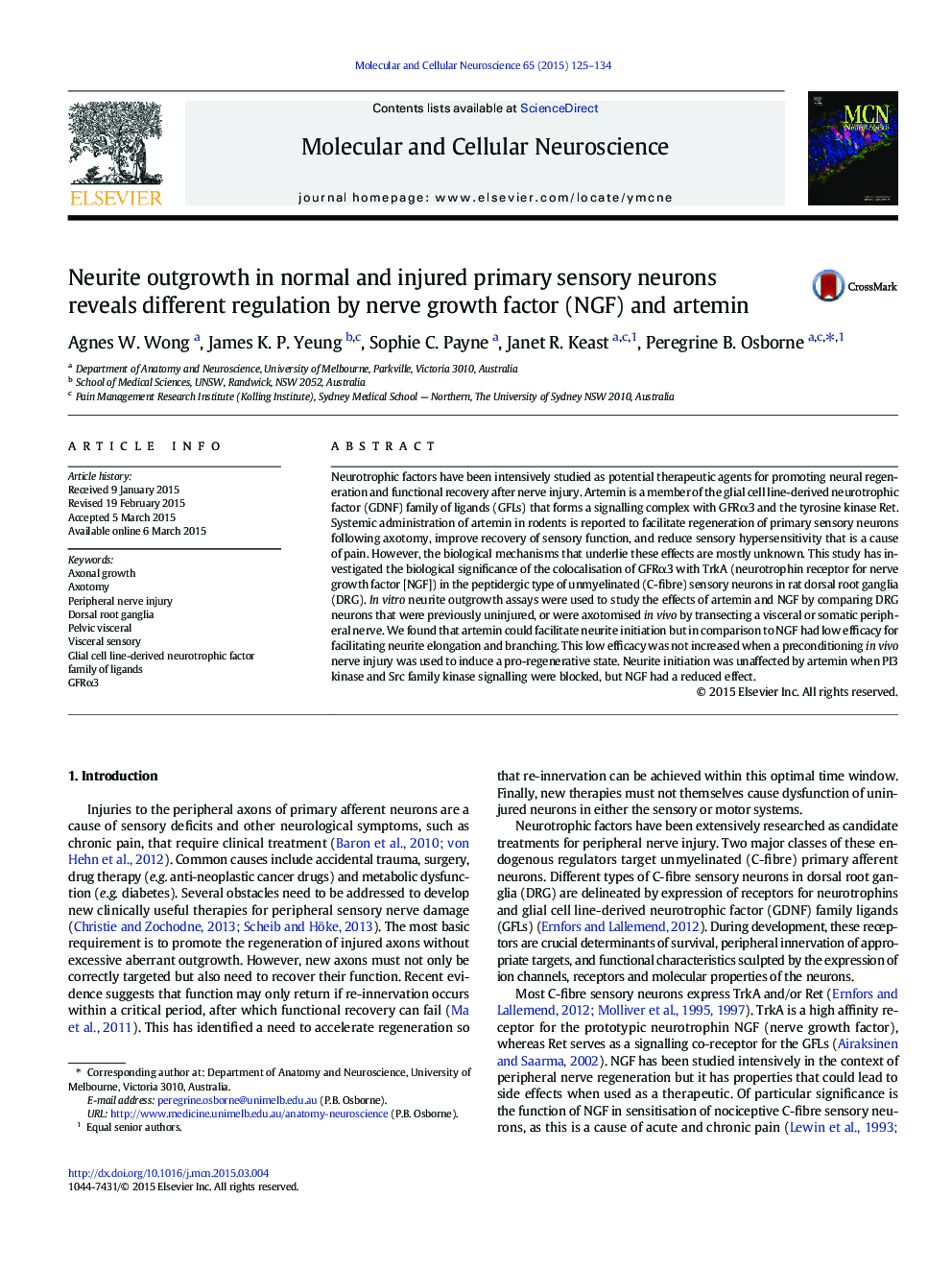| Article ID | Journal | Published Year | Pages | File Type |
|---|---|---|---|---|
| 8478580 | Molecular and Cellular Neuroscience | 2015 | 10 Pages |
Abstract
Neurotrophic factors have been intensively studied as potential therapeutic agents for promoting neural regeneration and functional recovery after nerve injury. Artemin is a member of the glial cell line-derived neurotrophic factor (GDNF) family of ligands (GFLs) that forms a signalling complex with GFRα3 and the tyrosine kinase Ret. Systemic administration of artemin in rodents is reported to facilitate regeneration of primary sensory neurons following axotomy, improve recovery of sensory function, and reduce sensory hypersensitivity that is a cause of pain. However, the biological mechanisms that underlie these effects are mostly unknown. This study has investigated the biological significance of the colocalisation of GFRα3 with TrkA (neurotrophin receptor for nerve growth factor [NGF]) in the peptidergic type of unmyelinated (C-fibre) sensory neurons in rat dorsal root ganglia (DRG). In vitro neurite outgrowth assays were used to study the effects of artemin and NGF by comparing DRG neurons that were previously uninjured, or were axotomised in vivo by transecting a visceral or somatic peripheral nerve. We found that artemin could facilitate neurite initiation but in comparison to NGF had low efficacy for facilitating neurite elongation and branching. This low efficacy was not increased when a preconditioning in vivo nerve injury was used to induce a pro-regenerative state. Neurite initiation was unaffected by artemin when PI3 kinase and Src family kinase signalling were blocked, but NGF had a reduced effect.
Related Topics
Life Sciences
Biochemistry, Genetics and Molecular Biology
Cell Biology
Authors
Agnes W. Wong, James K. P. Yeung, Sophie C. Payne, Janet R. Keast, Peregrine B. Osborne,
